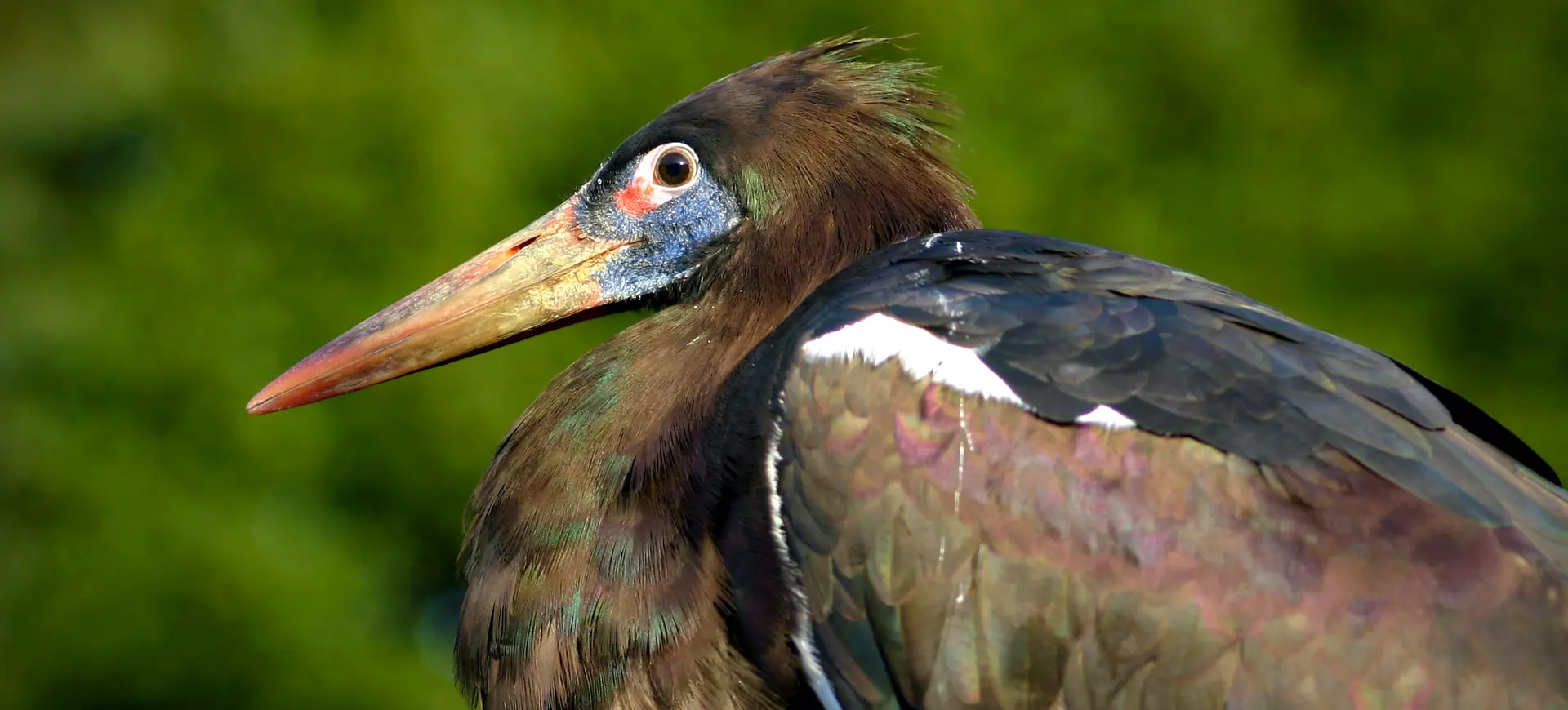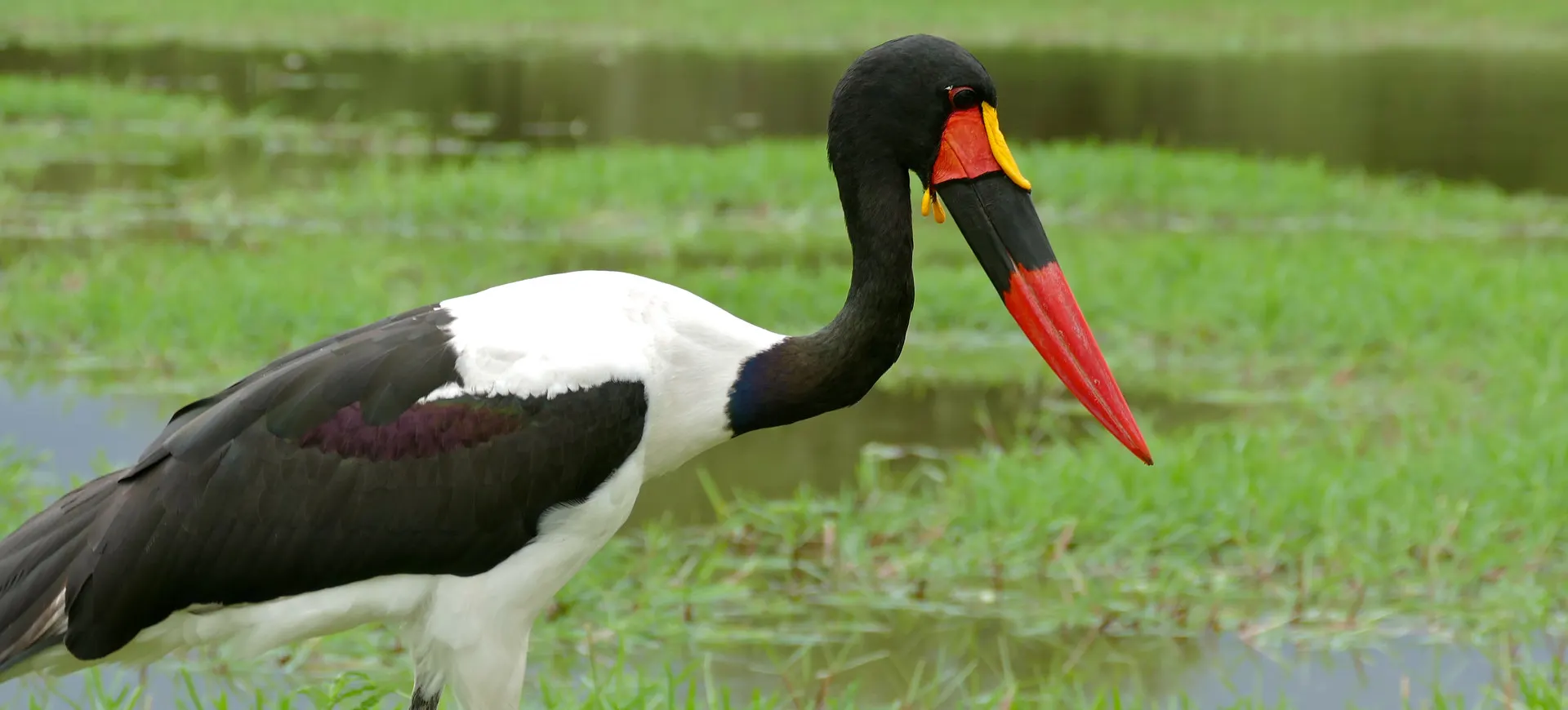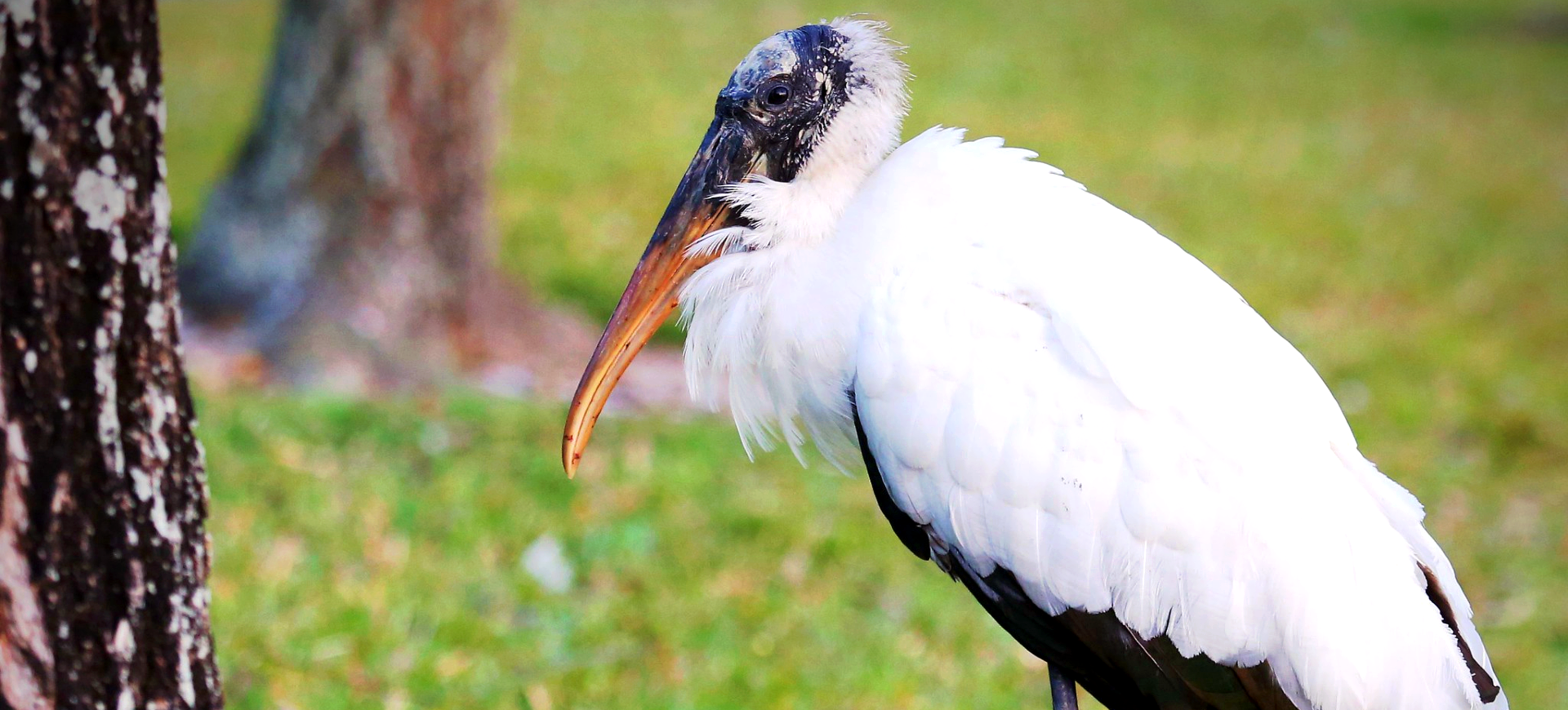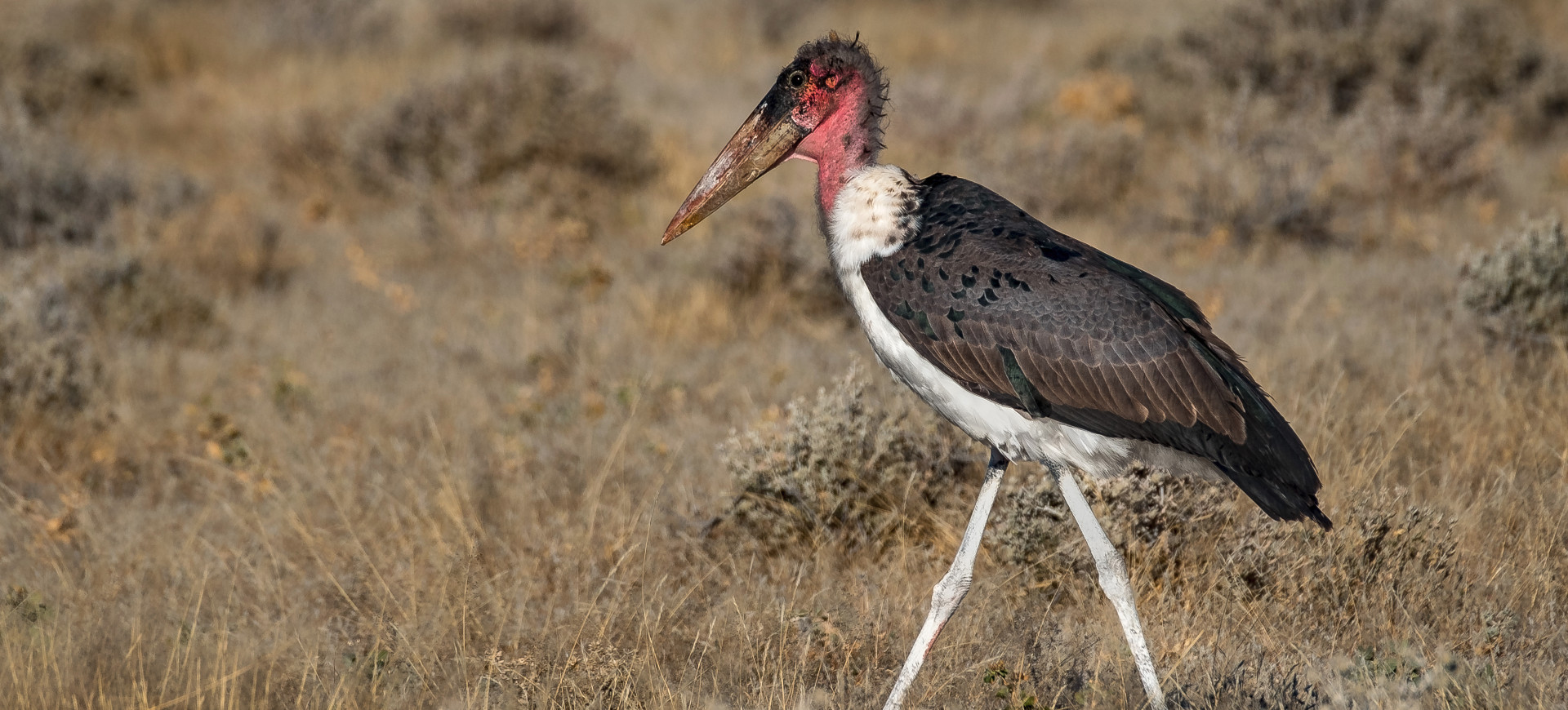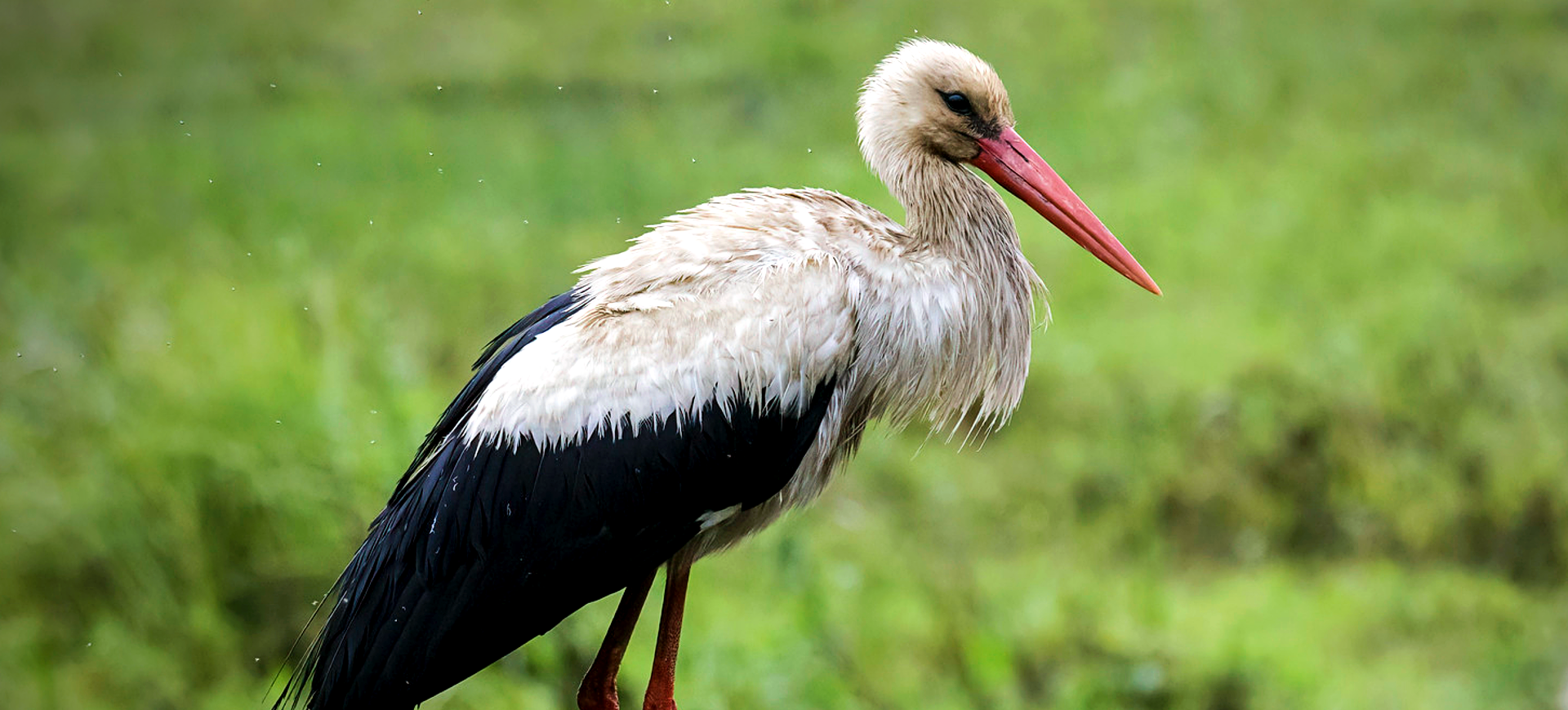Overview
Storm’s Stork, also known as Ciconia Stormi, is one of the world’s most enigmatic and least-known bird species. Being the rarest of all storks, this species, named after the 19th-century Dutch zoologist Theodor Storm, is an exquisite creature with a shiny black plumage that dramatically contrasts with the bright orange-red bill and legs. The species exhibits sexual dimorphism, with males being slightly larger than females.
Storm’s Storks are elusive, often staying in dense forest habitats. They are typically found in freshwater and peat swamp forests, primarily in lowland areas with slow-moving rivers. Even though they can occasionally be spotted in mangroves and other coastal habitats, these instances are infrequent. The species is known for its solitary lifestyle, living individually or in small groups.
The Storm’s Stork is classified as endangered, according to the International Union for Conservation of Nature (IUCN). The primary threats to this species are habitat destruction and fragmentation, mainly due to logging, draining for agriculture, and other human activities. The population is estimated to be fewer than 500 individuals, making it one of the most critical avian conservation priorities.
Taxonomy
Kingdom
Phylum
Class
Order
Family
Genus
Species
Type
Physical Description:
Storm’s Stork stands out with its distinctive combination of a white underbody, shiny black wings and back, and a vibrant orange bill and legs. Its face is black, with an orangish patch of bare skin around its eyes. Adult Storm’s Storks are characterized by a white collar at the base of their neck, while juveniles have a greyish brown plumage with a duller bill color.
In terms of size, Storm’s Stork is relatively more minor compared to other stork species. The head-to-body length varies between 75 and 91 centimeters, with a wingspan of approximately 150 cm. Its long, muscular legs allow it to wade through shallow waters, and the extended, sharp bill aids in capturing prey.

Lifespan: Wild: ~15 Years || Captivity: ~20 Years

Weight: Male: 5.5 lbs (2.5 kg) || Female: 4.4 lbs (2 kg)

Length: Male: 35 inches (89 cm) || Female: 30 inches (76 cm)

Wingspan: Male & Female: 59 inches (150 cm)

Top Speed: 30 mph (48 km/h)
Characteristic:
Native Habitat:
The native habitats of Storm’s Stork are freshwater and peat swamp forests found in the lowland areas of Southeast Asia. They prefer environments with slow-moving rivers and an abundance of small aquatic prey. These habitats are dense and often remote, contributing to the bird’s elusive nature. Storm Storks can occasionally be found in coastal habitats such as mangroves.
Despite their adaptability to different forest habitats, the loss of these environments poses a significant threat to the species. Deforestation for agricultural purposes, logging activities, and land conversion for palm oil plantations has led to severe habitat loss and fragmentation, the main challenge to the species’ survival.
Climate Zones:
Biomes:
Biogeographical Realms:
Continents:
Diet:
Diet & Feeding Habits:
Storm’s Storks are carnivorous and exhibit a broad diet, mainly consisting of tiny aquatic organisms. They feed on fish, crustaceans, amphibians, and occasionally insects and small reptiles. Their hunting strategy usually involves them wading quietly through shallow waters, using their long bills to probe for food. Their sharp beaks allow them to capture and hold onto slippery prey effectively.
When feeding, they employ a unique method known as tactile feeding, where they partially open their beak and immerse it in the water, waiting for a prey item to touch the inside of the beak. Once the prey comes into contact, they swiftly close their bill, capturing the meal. While hunting, the stork is often seen slowly walking through water bodies, carefully watching for potential prey.
Mating Behavior:
Mating Description:
Storm’s Stork’s mating system is not well studied, but like many storks, they are believed to be monogamous, maintaining the same partner for several breeding seasons or possibly for life. The breeding season coincides with the onset of the dry season, typically between January and July when food resources are abundant.
Storm’s Storks build nests high up in trees near water bodies, using twigs and branches. The nests are lined with softer material for cushioning. Females lay two to three chalky-white eggs, and both parents share the incubation duty, which lasts about 30 days. After hatching, the young storks are cared for by both parents until they become independent.
Reproduction Season:
Birth Type:
Pregnancy Duration:
Female Name:
Male Name:
Baby Name:
Social Structure Description:
Storm’s Stork exhibits a markedly solitary lifestyle or lives in small family groups, distinguishing it from many other stork species known for forming large breeding colonies. Typically, these storks are observed alone or in pairs, navigating their habitat with a preference for solitude. This behavior underlines the species’ tendency towards a less social existence, further complicating efforts to study and conserve them due to their preference for isolation.
The elusive nature and rarity of Storm’s Stork have made it challenging for researchers to thoroughly understand their social structure. Despite this, it is evident that they avoid areas with human activities, suggesting a sensitivity to disturbance that could further threaten their survival. The lack of comprehensive data on their social interactions and structure emphasizes the need for targeted research to better protect and conserve this endangered species.
Groups:
Conservation Status:
Population Trend:
The population of Storm’s Stork, estimated at fewer than 500 individuals in the wild, ranks it among the most endangered stork species worldwide. This critical status is largely attributed to extensive habitat destruction, leading to a highly fragmented population. These birds are scattered across isolated pockets of suitable habitats in Southeast Asia, exacerbating the challenge of conserving and increasing their numbers.
Population densities of Storm’s Stork remain low, with sightings typically involving solitary individuals or small groups, further highlighting their vulnerability. The exact number of individuals held in captivity remains unknown, largely due to the species’ specific habitat requirements and elusive nature, making captive breeding efforts challenging and infrequent.
Population Threats:
The primary threat to Storm’s Stork is habitat loss due to extensive deforestation for agricultural expansion, logging, and the development of palm oil plantations. The draining of peat swamp forests, one of their primary habitats for conversion into agricultural land, poses a significant threat. Furthermore, hunting and trapping for the pet trade in certain regions add to the species’ survival difficulties.
Additional threats come from pollution, especially in water bodies, impacting the quality and availability of their prey. Climate change, leading to increased frequency and intensity of forest fires, poses an emerging threat to their habitat. The species’ small population size and fragmented distribution further exacerbate their vulnerability.
Conservation Efforts:
Conservation efforts for Storm’s Stork primarily focus on habitat protection and restoration. This includes establishing and effectively managing protected areas encompassing their critical habitats, such as national parks and reserves. Some efforts have been directed toward promoting sustainable agricultural practices that are less destructive to the forest ecosystem.
In certain regions, local communities are involved in conservation initiatives, contributing to habitat protection and species monitoring. International collaborative efforts also exist to understand the species’ ecology better and monitor its population trend. Despite these efforts, more comprehensive and targeted conservation strategies are needed to ensure the survival of this critically endangered bird.
Additional Resources:
Fun Facts
- Storm’s Stork is named after Theodor Storm, a 19th-century Dutch zoologist.
- They are the rarest stork species, with fewer than 500 individuals estimated in the wild.
- Storm’s Storks are primarily solitary and tend to live individually or in small family groups.
- They use a unique feeding method called tactile feeding, where they immerse their partially open bill in the water, waiting for prey to touch inside the beak.
- The species is sexually dimorphic, with males being slightly larger than females.
- Like many stork species, Storm’s Storks do not form large breeding colonies.
- The species’ vibrant orange bill and legs contrast dramatically with its shiny black plumage.
- They have a broad diet, including fish, crustaceans, amphibians, insects, and small reptiles.
- Despite being a bird species, Storm’s Stork is primarily associated with forest habitats, unlike many other storks that frequent wetlands.
- Habitat loss due to deforestation for agriculture and logging is the primary threat to this species survival.








